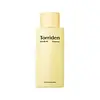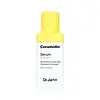What's inside
What's inside
 Key Ingredients
Key Ingredients

 Benefits
Benefits

 Concerns
Concerns

 Ingredients Side-by-side
Ingredients Side-by-side

Water
Skin ConditioningGlycerin
HumectantButylene Glycol
Humectant1,2-Hexanediol
Skin ConditioningCaprylic/Capric Triglyceride
MaskingPanthenol
Skin ConditioningCeramide NP
Skin ConditioningCeramide Ns
Skin ConditioningCeramide As
Skin ConditioningCeramide EOP
Skin ConditioningCeramide AP
Skin ConditioningChamomilla Recutita Leaf Extract
MaskingCamellia Sinensis Leaf Extract
AntimicrobialThymus Vulgaris Extract
PerfumingMentha Suaveolens Leaf Extract
AstringentAllantoin
Skin ConditioningSodium Hyaluronate
HumectantTrehalose
HumectantSucrose
HumectantCholesterol
EmollientGlycereth-26
HumectantC14-22 Alcohols
Emulsion StabilisingC12-20 Alkyl Glucoside
EmulsifyingPvm/Ma Copolymer
Emulsion StabilisingAcrylates/C10-30 Alkyl Acrylate Crosspolymer
Emulsion StabilisingGlyceryl Acrylate/Acrylic Acid Copolymer
HumectantHydrogenated Lecithin
EmulsifyingTromethamine
BufferingTocopherol
AntioxidantCarthamus Tinctorius Flower Extract
Skin ConditioningAdansonia Digitata Seed Oil
EmollientXanthan Gum
EmulsifyingStearic Acid
CleansingDisodium EDTA
Ethylhexylglycerin
Skin ConditioningWater, Glycerin, Butylene Glycol, 1,2-Hexanediol, Caprylic/Capric Triglyceride, Panthenol, Ceramide NP, Ceramide Ns, Ceramide As, Ceramide EOP, Ceramide AP, Chamomilla Recutita Leaf Extract, Camellia Sinensis Leaf Extract, Thymus Vulgaris Extract, Mentha Suaveolens Leaf Extract, Allantoin, Sodium Hyaluronate, Trehalose, Sucrose, Cholesterol, Glycereth-26, C14-22 Alcohols, C12-20 Alkyl Glucoside, Pvm/Ma Copolymer, Acrylates/C10-30 Alkyl Acrylate Crosspolymer, Glyceryl Acrylate/Acrylic Acid Copolymer, Hydrogenated Lecithin, Tromethamine, Tocopherol, Carthamus Tinctorius Flower Extract, Adansonia Digitata Seed Oil, Xanthan Gum, Stearic Acid, Disodium EDTA, Ethylhexylglycerin
Water
Skin ConditioningDipropylene Glycol
HumectantGlycerin
Humectant1,2-Hexanediol
Skin ConditioningGlycereth-26
HumectantCyclomethicone
EmollientCyclohexasiloxane
EmollientCaprylic/Capric Triglyceride
MaskingPentylene Glycol
Skin ConditioningPolyglyceryl-10 Stearate
Skin ConditioningPolyglyceryl-3 Methylglucose Distearate
EmulsifyingHydrogenated Poly(C6-14 Olefin)
EmollientC12-15 Alkyl Benzoate
AntimicrobialNeopentyl Glycol Diheptanoate
EmollientCetearyl Alcohol
EmollientPentaerythrityl Distearate
EmulsifyingCeramide NP
Skin ConditioningCeramide Ns
Skin ConditioningCeramide As
Skin ConditioningCeramide AP
Skin ConditioningCeramide EOP
Skin ConditioningHimanthalia Elongata Extract
Skin ProtectingEclipta Prostrata Leaf Extract
Skin ConditioningMalt Extract
Skin ProtectingMelia Azadirachta Flower Extract
Skin ConditioningTheobroma Cacao Extract
Skin ConditioningMelia Azadirachta Leaf Extract
Skin ConditioningCurcuma Longa Root Extract
MaskingAvena Sativa Kernel Extract
AbrasivePteris Multifida Extract
AntioxidantCynara Scolymus Leaf Extract
Skin ConditioningOcimum Sanctum Leaf Extract
Skin ConditioningCorallina Officinalis Extract
Skin ConditioningHydrogenated Lecithin
EmulsifyingCitrus Aurantium Bergamia Fruit Oil
MaskingPelargonium Graveolens Flower Oil
MaskingArgania Spinosa Kernel Oil
EmollientSalvia Officinalis Oil
MaskingPogostemon Cablin Leaf Oil
MaskingSaccharomyces Ferment Filtrate
HumectantMethylpropanediol
SolventAcrylates/C10-30 Alkyl Acrylate Crosspolymer
Emulsion StabilisingAmmonium Acryloyldimethyltaurate/Vp Copolymer
Tromethamine
BufferingXanthan Gum
EmulsifyingSodium Stearoyl Glutamate
CleansingFructooligosaccharides
HumectantBeta-Glucan
Skin ConditioningGlyceryl Polymethacrylate
Dextrin
AbsorbentDisodium EDTA
Bisabolol
MaskingPolyquaternium-51
Skin ConditioningGlyceryl Stearate
EmollientHydrolyzed Hyaluronic Acid
HumectantDicaprylyl Carbonate
EmollientSucrose Distearate
EmollientCholesterol
EmollientPyracantha Fortuneana Fruit Extract
Skin ConditioningEthylhexylglycerin
Skin ConditioningCitronellol
PerfumingGeraniol
PerfumingLinalool
PerfumingLimonene
PerfumingWater, Dipropylene Glycol, Glycerin, 1,2-Hexanediol, Glycereth-26, Cyclomethicone, Cyclohexasiloxane, Caprylic/Capric Triglyceride, Pentylene Glycol, Polyglyceryl-10 Stearate, Polyglyceryl-3 Methylglucose Distearate, Hydrogenated Poly(C6-14 Olefin), C12-15 Alkyl Benzoate, Neopentyl Glycol Diheptanoate, Cetearyl Alcohol, Pentaerythrityl Distearate, Ceramide NP, Ceramide Ns, Ceramide As, Ceramide AP, Ceramide EOP, Himanthalia Elongata Extract, Eclipta Prostrata Leaf Extract, Malt Extract, Melia Azadirachta Flower Extract, Theobroma Cacao Extract, Melia Azadirachta Leaf Extract, Curcuma Longa Root Extract, Avena Sativa Kernel Extract, Pteris Multifida Extract, Cynara Scolymus Leaf Extract, Ocimum Sanctum Leaf Extract, Corallina Officinalis Extract, Hydrogenated Lecithin, Citrus Aurantium Bergamia Fruit Oil, Pelargonium Graveolens Flower Oil, Argania Spinosa Kernel Oil, Salvia Officinalis Oil, Pogostemon Cablin Leaf Oil, Saccharomyces Ferment Filtrate, Methylpropanediol, Acrylates/C10-30 Alkyl Acrylate Crosspolymer, Ammonium Acryloyldimethyltaurate/Vp Copolymer, Tromethamine, Xanthan Gum, Sodium Stearoyl Glutamate, Fructooligosaccharides, Beta-Glucan, Glyceryl Polymethacrylate, Dextrin, Disodium EDTA, Bisabolol, Polyquaternium-51, Glyceryl Stearate, Hydrolyzed Hyaluronic Acid, Dicaprylyl Carbonate, Sucrose Distearate, Cholesterol, Pyracantha Fortuneana Fruit Extract, Ethylhexylglycerin, Citronellol, Geraniol, Linalool, Limonene
 Reviews
Reviews

Ingredients Explained
These ingredients are found in both products.
Ingredients higher up in an ingredient list are typically present in a larger amount.
1,2-Hexanediol is a synthetic liquid and another multi-functional powerhouse.
It is a:
- Humectant, drawing moisture into the skin
- Emollient, helping to soften skin
- Solvent, dispersing and stabilizing formulas
- Preservative booster, enhancing the antimicrobial activity of other preservatives
Acrylates/C10-30 Alkyl Acrylate Crosspolymer is a synthetic polymer. It is used to thicken and improve the texture of products. Due to its properties, it can prevent water and oil ingredients from separating.
This ingredient is an emollient, solvent, and texture enhancer. It is considered a skin-softener by helping the skin prevent moisture loss.
It helps thicken a product's formula and makes it easier to spread by dissolving clumping compounds.
Caprylic Triglyceride is made by combining glycerin with coconut oil, forming a clear liquid.
While there is an assumption Caprylic Triglyceride can clog pores due to it being derived from coconut oil, there is no research supporting this.
Learn more about Caprylic/Capric TriglycerideCeramide AP is formally known as Ceramide 6.
Ceramides are intercellular lipids naturally found in our skin that bonds dead skin cells together to create a barrier. Having a strong skin barrier leads to more firm and hydrated skin.
They are known for their ability to hold water and thus are a great ingredient for dry skin. By bolstering the skin ceramides act as a barrier against irritating ingredients. This can help with inflammation as well.
If you would like to eat ceramides, sweet potatoes contain a small amount.
Read more about other common types of ceramides here:
Ceramide NP
Ceramide EOP
Ceramide AS is formally known as Ceramides 4 and 5.
Ceramides are intercellular lipids naturally found in our skin that bonds dead skin cells together to create a barrier. They are known for their ability to hold water and thus are a great ingredient for dry skin.
Ceramide EOP is formally known as Ceramide 1 and Ceramide 1 A.
EOP stands for a linked Ester fatty acid, a linked Omega hydroxy fatty acid, and the Phytosphingosine base.
Ceramides are intercellular lipids naturally found in our skin. They bind dead skin cells together to create a barrier. The ceramides in our skin have the ability to hold water to keep our skin hydrated.
Ceramides are an important building block for our skin barrier. A strong skin barrier helps with:
If you would like to eat ceramides, sweet potatoes contain a small amount.
Read more about other common types of ceramides here:
Learn more about Ceramide EOPCeramide NP is a type of ceramide and formally known as ceramide 3.
Ceramides are intercellular lipids naturally found in our skin that bonds dead skin cells together to create a barrier. They are known for their ability to hold water and thus are a great ingredient for dry skin.
Ceramides are an important building block for our skin barrier. A stronger barrier helps the skin look more firm and hydrated. By bolstering the skin ceramides act as a barrier against irritating ingredients. This can help with inflammation as well.
If you would like to eat ceramides, sweet potatoes contain a small amount.
Read more about other common types of ceramides here:
Ceramide AP
Ceramide EOP
Ceramide NS is formally known as Ceramide 2. It is one of the major ceramides in the stratum corneum (outermost layer of skin) plays a role in forming a protective barrier.
Due to its structure, skin lipids can be packed tightly and in turn, this strengthens the barrier and reduces water loss.
Studies show conditions like atopic dermatitis can worsen when ceramide NS levels are low.
Learn more about Ceramide NsCholesterol is a class of organic molecules called lipids. It helps hydrate your skin and is essential to having a healthy skin barrier.
Our skin naturally contains cholesterol in the outermost layer. Besides cholesterol, it also contains ceramides and fatty acids. Cholesterol makes up about 1/4 of your skin's outer layer and barrier. Your skin barrier is responsible for keeping allergens and microbes out. Having a healthy skin barrier is also responsible for keeping your skin firm and plump.
Our bodies use cholestrol to create vitamin D, steroid hormones, and more.
Learn more about CholesterolDisodium EDTA plays a role in making products more stable by aiding other preservatives.
It is a chelating agent, meaning it neutralizes metal ions that may be found in a product.
Disodium EDTA is a salt of edetic acid and is found to be safe in cosmetic ingredients.
Learn more about Disodium EDTAEthylhexylglycerin (we can't pronounce this either) is commonly used as a preservative and skin softener. It is derived from glyceryl.
You might see Ethylhexylglycerin often paired with other preservatives such as phenoxyethanol. Ethylhexylglycerin has been found to increase the effectiveness of these other preservatives.
Glycereth-26 is a synthetic ingredient and polyethylene glycol ether of Glycerin. Glycerin is already naturally found in your skin and helps keep your skin moisturized.
It is a humectant and helps add texture to products. It can make your product thicker.
As a humectant, it helps draw moisture from the air to your skin. This helps your skin stay hydrated.
Learn more about Glycereth-26Glycerin is already naturally found in your skin. It helps moisturize and protect your skin.
A study from 2016 found glycerin to be more effective as a humectant than AHAs and hyaluronic acid.
As a humectant, it helps the skin stay hydrated by pulling moisture to your skin. The low molecular weight of glycerin allows it to pull moisture into the deeper layers of your skin.
Hydrated skin improves your skin barrier; Your skin barrier helps protect against irritants and bacteria.
Glycerin has also been found to have antimicrobial and antiviral properties. Due to these properties, glycerin is often used in wound and burn treatments.
In cosmetics, glycerin is usually derived from plants such as soybean or palm. However, it can also be sourced from animals, such as tallow or animal fat.
This ingredient is organic, colorless, odorless, and non-toxic.
Glycerin is the name for this ingredient in American English. British English uses Glycerol/Glycerine.
Learn more about GlycerinHydrogenated Lecithin is created from the hydrogenation of lecithin (a group of phospholipids). Hydrogenation is a chemical reaction between hydrogen and another element.
This ingredient is an emollient and emulsifier. As an emollient, it helps soften skin by trapping moisture within. As an emulsifier, it prevents oil and water ingredients from separating.
Tromethamine helps balance the pH and improve the texture of a product. It is synthetically created.
As an emulsifier, Tromethamine prevents oil and water ingredients from separating. This helps stabilize the product and elongate a product's shelf life. Tromethamine also makes a product thicker.
Tromethamine helps balance the pH level of a product. Normal pH level of skin is slightly acidic (~4.75-5.5). The acidity of our skin is maintained by our glands and skin biome. Being slightly acidic allows our skin to create an "acid mantle". This acid mantle is a thin barrier that protects our skin from bacteria and contaminants.
Oral Tromethanmine is an anti-inflammatory drug but plays the role of masking, adding fragrance, and/or balancing pH in skincare.
1,3-Propanediol, 2-amino-2-(hydroxymethyl)-
Learn more about TromethamineWater. It's the most common cosmetic ingredient of all. You'll usually see it at the top of ingredient lists, meaning that it makes up the largest part of the product.
So why is it so popular? Water most often acts as a solvent - this means that it helps dissolve other ingredients into the formulation.
You'll also recognize water as that liquid we all need to stay alive. If you see this, drink a glass of water. Stay hydrated!
Learn more about WaterXanthan gum is used as a stabilizer and thickener within cosmetic products. It helps give products a sticky, thick feeling - preventing them from being too runny.
On the technical side of things, xanthan gum is a polysaccharide - a combination consisting of multiple sugar molecules bonded together.
Xanthan gum is a pretty common and great ingredient. It is a natural, non-toxic, non-irritating ingredient that is also commonly used in food products.
Learn more about Xanthan Gum